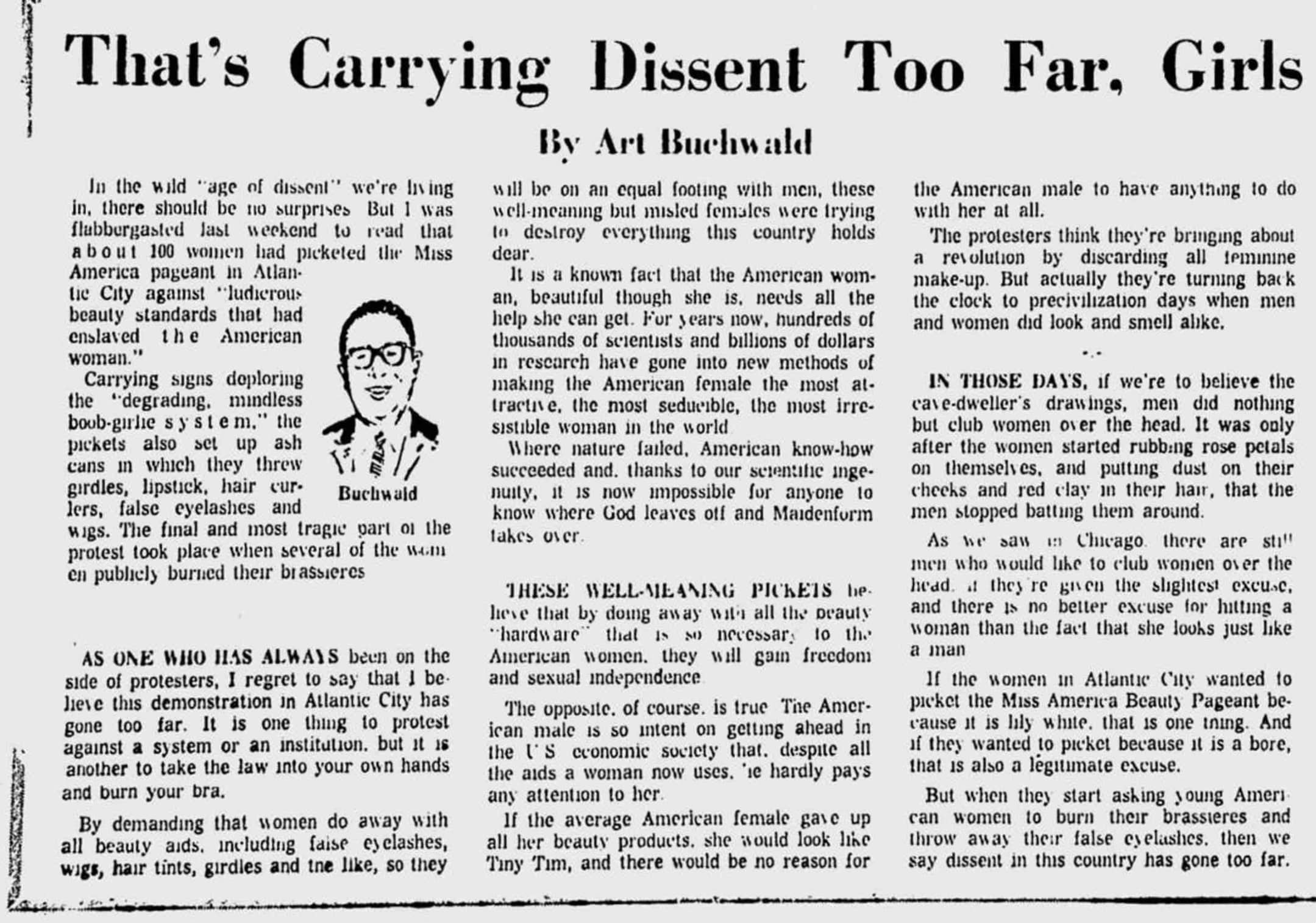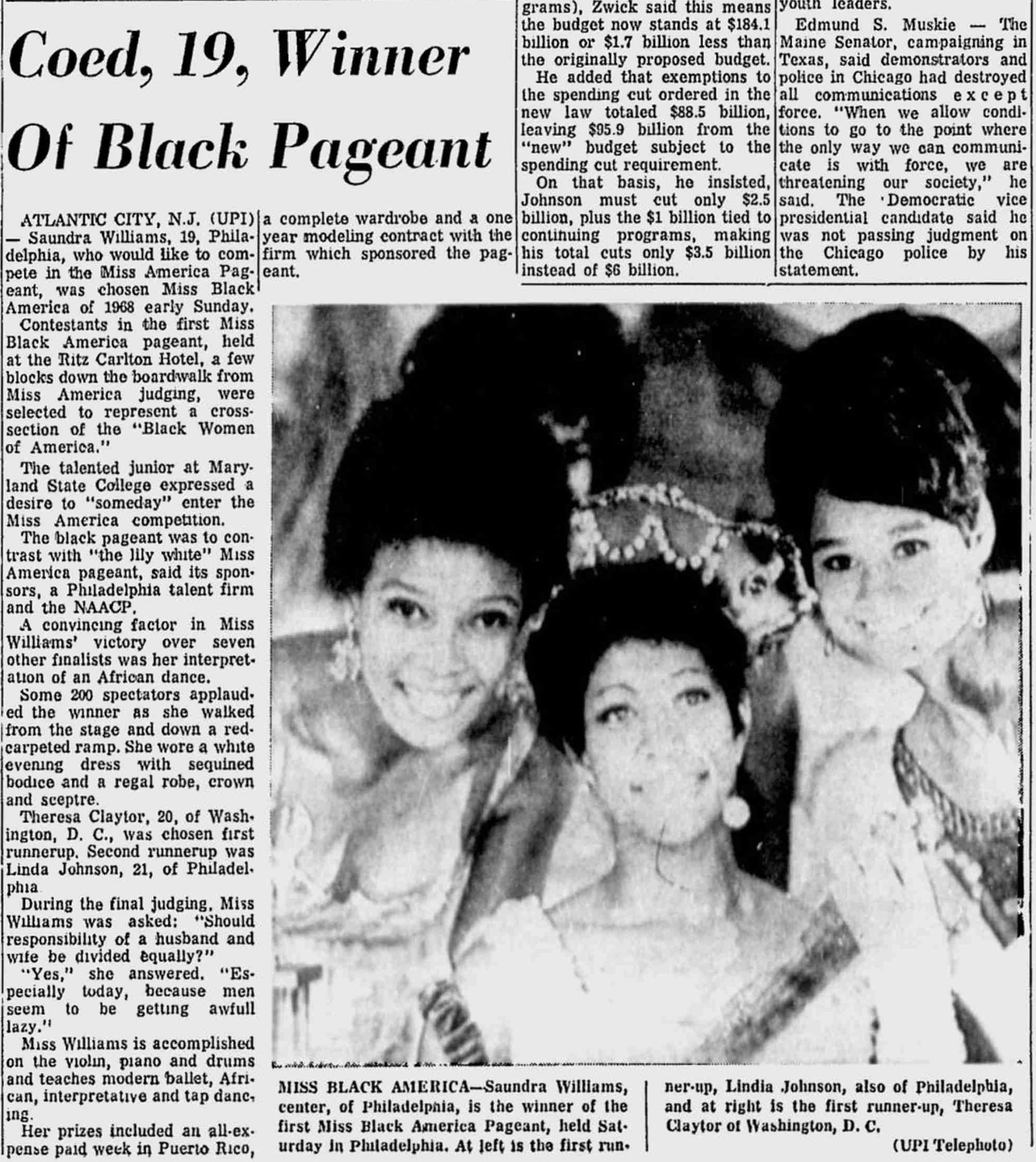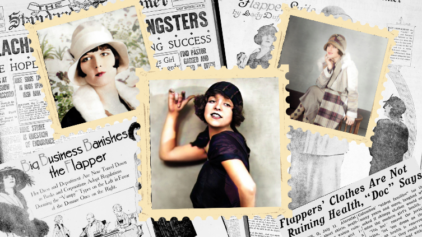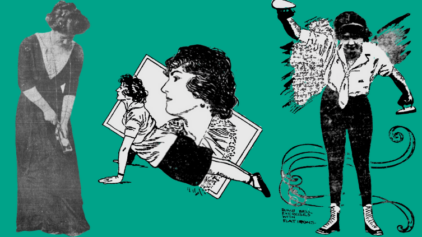The Myth of the Burning Bra: The Act of Feminist Extremism That Never Happened
- By Daniella


When did feminist activists start burning bras to protest the oppression of women?
If you consult historical newspapers to find an answer to this question, they will point you towards a specific event: the Miss America pageant protest of 1968.
There’s just one problem: decades of research and discussion have soundly concluded that not a single bra was burned at that event.
So how did the burning bra become such a well-known symbol of second-wave feminist activism? It’s a prime example of a media-driven myth: a misperception that is amplified by repeated media coverage.
Our Research team dove into the historical newspaper collection on MyHeritage to explore the story behind the myth. Here’s what they found.
The Miss America pageant protest of 1968
The myth of the burning bra emerged 55 years ago, in September 1968, following a protest against the Miss America pageant.
The Miss America pageant was wildly popular in America of the 1960s. This article from the Beaver County Times describes it as “America’s answer to a royal coronation,” viewed by tens of millions across the nation.
At this particular event in 1968, in one of the first high-profile actions of the emerging feminist movement in the United States, a group of demonstrators gathered outside the Atlantic City convention hall to protest the event. Protesters argued that the pageant was sexist and objectified women. The article below, published in The Star Pheonix on September 5, 1968, states that these protesters had “no formal organization,” instead quoting one of the participants as saying that they were part of a “growing women’s underground — a women’s liberation movement.”
One of the most prominent images to emerge from the protest was the “Freedom Trash Can”: a metal barrel into which several women threw items they considered to be symbols of women’s oppression. The items included high-heeled shoes, makeup, false eyelashes, aprons, corsets, and yes, a bra or two.
This symbolic act was meant to express a rejection of the oppressive standards of female beauty and femininity that they believed were being propagated by such pageants.
But here’s the thing: while these items were indeed thrown into a trash can as a part of the demonstration, there is no reliable evidence to suggest that any of these items, bras included, were set on fire.
And yet, in the days that followed, reactionary pieces began mentioning the burning of bras. See for example this opinion piece by Art Buchwald, which appeared in The Portsmouth Times on September 12, 1968 under the patronizing title, “That’s Carrying Dissent Too Far, Girls”:
“The final and most tragic part of the protest took place when several of the women publicly burned their brassieres… It is one thing to protest against a system or an institution, but it is another to take the law into your own hands and burn your bra,” writes Art.
Conflating the “Freedom Trash Can” with draft card burning
So where did this idea that activists burned bras come from?
The misconception was likely a conflation of the events of September 1968 with the practice of draft card burning, a protest tactic used by those opposing the Vietnam War during roughly the same period. The media played up this angle, leading to the enduring and somewhat misleading term “bra burners” being associated with feminists from that era.
The protesters were demonstrating against a lot more than the existence of the pageant. They were opposed to everything it represented, including gender inequality and racial discrimination. A separate civil rights protest took place at the same time to speak out against the pageant’s lack of diversity and representation for women of color.
A rival Miss Black America Pageant was held a few blocks away for the first time ever.
The protesters also held their own mock counter-pageant where they crowned a sheep as “Miss America,” suggesting that the real pageant treated women like livestock at a county fair.
The Miss America pageant protest was a significant milestone that brought attention to the women’s liberation movement and challenged cultural norms surrounding beauty standards and the treatment of women. It remains one of the most memorable moments in feminist history. However, it turns out that the image of the burning bra, often used pejoratively to portray activists as irrational and to mock and trivialize feminist concerns — is not anchored in actual historical fact.
It makes one wonder what other ideas or images have cemented themselves into our culture without any basis in reality.
Find more fascinating stories about the past in MyHeritage’s newspaper collections.













